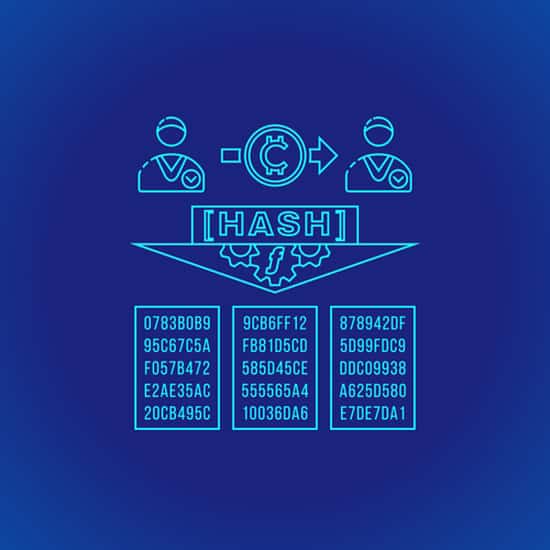
Table of Contents
What Is Cryptography? A Complete Overview
Cryptography is a wide topic in cybersecurity. Cryptography refers to the practice of using encryption techniques to secure data, as well as providing methods for authentication and verification. It is used to protect private information from unauthorized access and manipulation. Cryptographic algorithms use a combination of techniques such as symmetric encryption, public key cryptography, digital signatures, and hash functions to encrypt data or messages. Symmetric encryption uses one secret key which can be used by both sender and receiver to encode and decode the information being sent. On the other hand, public key cryptography requires two different keys – a public key for encoding the message that is shared publicly, and a corresponding private key that must be kept confidential in order for decryption to take place successfully.
Data encryption is also an important aspect of cryptography; it ensures that data stored on computer systems or transmitted over networks remains inaccessible unless authorized users have access keys. Cryptographic algorithms also provide authentication services that enable users to verify if a message has been sent by its purported sender or not without actually having access to the contents of that message. These algorithms use digital signatures which are unique strings generated based on certain parameters like a time stamp, software version, etc., during communication sessions between two parties. As long as these parameters remain unchanged across successive communications between two parties, digital signatures will remain valid ensuring authenticity of information passing through them. Hash functions are another cryptographic technique used for verifying data integrity by generating output codes from input values such as files or documents; if any changes occur in those input values then their corresponding output codes will change significantly making them invalid thereby alerting users about potential alterations made by malicious actors.
Cryptography is an essential tool in today’s tech-driven world where personal privacy needs protection against increasing cyber threats posed by hackers or criminals who may try to gain unauthorized access to sensitive systems or networks resulting in loss of confidential information or financial damage due to malicious activities like identity theft or frauds related to online transactions etc. Therefore it becomes necessary for individuals and organizations alike to employ strong cryptographic methods in order safeguard their valuable assets from any kind of security breach attempts while maintaining secure communication channels over various interconnected networks across the globe without compromising on data privacy standards set forth by international authorities governing internet usage policies worldwide.
How Does Cryptography Work?
Cryptography works by encoding the data so that it can only be decoded and accessed with the use of encryption keys. These keys are generated using a secret key or using an algorithm such as a public key or symmetric key cryptography. The encryption algorithms used in cryptography establish a secure link between the sender and receiver, ensuring that all data is kept confidential while in transit.

Public key cryptography relies on two separate encryption keys: one to encrypt the data and another to decrypt it. In this system, each user has their own pair of encryption keys which allows messages to be sent securely without any prior knowledge of the recipient’s private key. However, this system does have some vulnerabilities since it relies on both parties having identical encryption keys at all times. Symmetric-key cryptography uses one single shared key for both encrypting and decrypting data, making it more secure than public-key cryptography as there is no need to exchange encryption keys beforehand. This type of cryptography ensures messages remain private through its use of complex algorithms which scramble the data before sending it over a network or storing it on disk.
Cryptography provides an effective way of protecting digital information from unauthorized access while allowing legitimate users to securely exchange data over networks like the Internet or corporate intranets. It can also be used to authenticate users attempting to gain access to systems or networks, ensuring that only authorized individuals have access rights while denying them to those who do not possess valid credentials. These protocols help the sender and receiver authenticate each other as well as protect their data from unauthorized access by third parties. The encryption process typically involves using a combination of mathematical algorithms to transform plaintext into an unreadable ciphertext. This ciphertext can only be decrypted with knowledge of the secret key used by both sender and recipient during transmission.
Cryptographic hash functions are often applied to digital signatures for verifying the authenticity and integrity of data transmitted across a network. A cryptographic hash function takes an input message and produces a fixed length output known as a message digest or hash value which is unique for every input message even if they have minor differences in content or format. If any changes occur after hashing has been performed on an original message, this will result in an entirely new hash value being produced which confirms that tampering has occurred with the original document.
Principles of Cryptography
Secure Communication is an important aspect of cryptography where different protocols like SSL/TLS are used to establish an encrypted link between two systems. These protocols also offer server authentication and client authentication by means of certificates issued by Certificate Authorities (CAs). It provides a safe platform for transactions while maintaining privacy among parties involved in the exchange. Cryptography plays an integral role in the security infrastructure of networks, providing confidentiality, integrity, authentication, and non-repudiation services for communication channels.
1. Confidentiality
Confidentiality is a key goal of cryptography, which uses encryption and other techniques to ensure that sensitive data remains inaccessible to unauthorized parties. Cryptography is the practice of creating secure communications between two or more entities by using algorithms and private keys:
- Encryption techniques are used to convert plain text into ciphertext which can only be decrypted with a valid private key.
- Symmetric encryption methods use the same key for both the encrypter and decrypter, while asymmetric encryption methods involve separate public and private keys.
- Digital signatures are used to authenticate digital documents as well as verify their integrity.

Data privacy is achieved through the use of cryptographic protocols such as Transport Layer Security (TLS) that provide end-to-end encryption. Cryptographic hashes are used in conjunction with digital signatures for verifying the authenticity of a message without revealing its contents. Hashes generate a fixed length output based on an arbitrary length input data string; this makes it possible to detect if any part of the original data has been altered before it reaches its destination. Cryptography is essential for protecting confidential information from unauthorized access, ensuring data privacy, and maintaining trust in today’s interconnected world. It has become an integral part of almost every aspect of our lives—from banking transactions to government records—and continues to evolve in order to meet new challenges posed by increased technological advancements.
2. Integrity
Cryptography plays a significant role in promoting integrity by ensuring the integrity of data and communications. Through the use of cryptographic techniques, sensitive information can be protected from unauthorized modifications or tampering, providing assurance that the data remains intact and unaltered. Integrity in cryptography is achieved through the use of hash functions and digital signatures. Hash functions generate a unique fixed-length string of characters, called a hash, based on the input data. Any modification to the original data, no matter how small, will result in a completely different hash value. By comparing the computed hash value of received data with the expected hash value, the recipient can verify the integrity of the data. If the hash values match, it confirms that the data has not been altered during transmission or storage.
Digital signatures, another cryptographic tool, provide a mechanism for verifying both the integrity and authenticity of data. A digital signature is created using the private key of a sender, which is unique to them. It ensures that the data has not been tampered with and that it indeed originates from the claimed sender. The recipient can use the corresponding public key to verify the digital signature and confirm the integrity of the data. By utilizing these cryptographic mechanisms, integrity is preserved throughout the entire lifecycle of data transmission and storage. Whether it is for secure communication, financial transactions, or data storage, cryptography provides the means to detect and prevent unauthorized modifications, instilling confidence in the integrity of the information being exchanged.
3. Non-repudiation
Non-repudiation is a cryptographic technique used to provide assurance that an entity cannot deny the transmission or receipt of data, thereby providing evidence for accountability and trustworthiness. Non-repudiation mechanisms use digital signature schemes such as Advanced Encryption Standard (AES), Public Key Cryptography Standards (PKCS), Symmetric Key (SK), and Elliptic Curve Cryptography (ECC). These cryptographic techniques allow users to securely transmit confidential information without any fear of repudiation by the receiver. Digital signatures ensure that the authenticity and integrity of data being transmitted are maintained by using encryption algorithms and asymmetric key pairs. The sender encrypts the message with their public key which is then decrypted with the private key of the recipient. This ensures that only authorized individuals can access, read, modify, or delete data.
Non-repudiation also prevents malicious actors from falsely denying participation in a transaction due to its ability to detect fraudulent activity in its early stages. For example, if an attacker attempts to tamper with or alter transmitted data before it reaches its intended recipient, non-repudiation mechanisms would be able to detect this change and alert both parties involved in the transaction so they can take necessary action. Furthermore, non-repudiation can also be used to provide proof of delivery for legal documents such as contracts between two parties involved in business transactions or disputes.
Note:
The use of digital signatures provides several advantages when compared with traditional methods like physical signatures since they offer stronger security measures against potential attackers while maintaining immutability and authentication throughout a transaction’s lifetime. Digital signatures are also much more cost-effective than physical ones since there is no need for paper certificates or other materials associated with them furthermore they can be quickly verified through automated processes without any manual intervention making them efficient as well as secure for businesses and organizations alike.4. Authentication
Authentication is the process of verifying an entity’s identity and ensuring that it is in fact the intended recipient of data or services. Authentication typically involves the use of a hardware security module, key encryption, and a cryptographic system to create what is known as strong access control lists. This provides an added layer of security to ensure that only authorized people have access to certain resources or communications. By using encrypted messages, authentication can protect against malicious activities such as spoofing, tampering, and man-in-the-middle attack. The strength of authentication depends on the quality of the underlying technology used to secure communication channels or authenticate users. For instance, if two parties are communicating over a network and one party wishes to authenticate the other then they must implement a secure protocol that will be used for verification purposes.

Additionally, strong access control lists should be enforced on all systems in order to prevent unauthorized access from attackers who may attempt to bypass authentication measures. These measures help protect sensitive information from being intercepted by malicious actors while also helping ensure that only those with legitimate authorization can gain access. Furthermore, it also helps organizations maintain compliance with industry regulations regarding data privacy and security best practices. Ultimately, authentication is an important element in any organization’s overall cybersecurity strategy as it helps keep systems safe from potential harm while still allowing legitimate users the ability to access resources needed for their work tasks.
Guidelines for Cryptographers
Here are some general guidelines for cryptographers:
Stay Updated
Cryptography is a rapidly evolving field, and it’s important to stay updated with the latest advancements, algorithms, and best practices. Follow reputable sources, research papers, conferences, and forums to stay informed about the latest developments.
Understand Cryptographic Algorithms
Gain a deep understanding of cryptographic algorithms, including their strengths, weaknesses, and appropriate use cases. Familiarize yourself with symmetric encryption, asymmetric encryption, hash functions, digital signatures, and key exchange protocols.
Use Strong and Tested Algorithms
When implementing cryptography, choose well-established and widely-tested algorithms from reputable sources. Avoid creating your own cryptographic algorithms, as they may have vulnerabilities that experienced cryptanalysts haven’t discovered.
Key Management
Properly manage cryptographic keys by using secure key storage, strong passwords, and encryption. Regularly rotate keys and consider implementing key management practices such as key escrow and revocation.
Secure Implementation
Ensure that your cryptographic implementations are secure and free from vulnerabilities. Follow secure coding practices, perform rigorous testing, and conduct code reviews to identify and fix any potential weaknesses.
Protect Against Side-Channel Attacks
Be aware of side-channel attacks that exploit information leaked through physical means such as timing, power consumption, or electromagnetic radiation. Implement countermeasures, such as constant-time algorithms and secure hardware, to protect against such attacks.
Practice Defense-In-Depth
Cryptography is just one layer of a comprehensive security strategy. Implement multiple layers of security controls, such as secure protocols, strong authentication, secure network design, and access controls, to create a robust defense-in-depth approach.
Continuously Assess and Update
Regularly assess the security of your cryptographic systems. Stay informed about newly discovered vulnerabilities and security patches. Implement updates and patches promptly to mitigate any potential risks.
Respect Legal and Ethical Considerations
Ensure that your use of cryptography complies with applicable laws and regulations in your jurisdiction. Respect user privacy and adhere to ethical guidelines regarding the use and sharing of sensitive information.
What Practical Problems Does Cryptography Solve?
Cryptography ensures the confidentiality of sensitive information by encrypting it. Encryption transforms data into an unreadable form, known as ciphertext, which can only be decrypted back into its original form by authorized recipients who possess the appropriate decryption key. This prevents unauthorized individuals or entities from accessing and understanding the content of the data. Cryptography helps ensure the integrity of data by detecting any unauthorized modifications or tampering. Hash functions and digital signatures allow data recipients to verify the integrity of received data by comparing expected values with computed values. If the values match, it indicates that the data has not been altered during transmission or storage.
Cryptography provides mechanisms for verifying the authenticity of communication participants and data sources. Digital signatures, for example, allow recipients to confirm that data has been sent by a specific sender and has not been tampered with during transit. This helps prevent impersonation and unauthorized access to sensitive information. Cryptographic techniques enable non-repudiation, which means that senders cannot deny sending a message or performing a transaction. Digital signatures provide proof of origin and integrity, ensuring that the sender cannot later dispute their involvement.
Cryptography enables secure communication over insecure channels, such as the Internet. Encrypting data during transmission prevents eavesdropping and unauthorized access to sensitive information. This is particularly crucial for activities like online banking, e-commerce transactions, and confidential communication. Cryptography addresses the challenge of securely exchanging encryption keys between communication parties. Secure key exchange protocols, such as the Diffie-Hellman key exchange, enable two parties to establish a shared secret key over an insecure channel without revealing it to eavesdroppers.
Types of Cryptography
By utilizing various cryptographic techniques, it is possible to protect confidential information from potential security threats and unauthorized access. Cryptography can be divided into two categories: symmetric-key cryptography and public-key cryptography.
Symmetric Key Cryptography
Symmetric-key cryptography, also known as single-key cryptography, utilizes the same key for both the sender and receiver to encrypt/decrypt a message. This form of cryptography is based on mathematical concepts and algorithms that are used in order to protect data and decrypt messages. Symmetric key cryptography is an essential part of modern encryption methods because it solves the problem of secure communication when two parties share no prior knowledge or trust with each other. The symmetric encryption process involves using a single shared secret key which is used by both parties to encrypt and decrypt information that has been sent over an insecure network. The same key must be kept private; if one party shares their key with another, then that person will have access to all information that was encrypted using that particular key. The strength of symmetric encryption lies in its ability to provide secure communication even when there is no prior relationship between the sender and receiver.
Asymmetric Key Cryptography
Asymmetric cryptography provides an alternative to symmetric-key encryption, offering a secure communication solution without the need for a shared secret key. As opposed to symmetric key cryptography which uses the same key for both encryption and decryption, asymmetric key cryptography utilizes two separate keys: one public and one private. The public key is used for encrypting data and the private key is used by the receiver of the data to decrypt it; this ensures that only those with access to the private keys are able to decrypt protected data.
Asymmetric algorithms have been around since 1976 when RSA was first introduced but have become increasingly important due to their ability to securely protect large volumes of data within complex systems. This makes them invaluable tools in today’s digital age as they provide an effective way of understanding what is cryptography while also protecting sensitive information from malicious attackers.
Hash Functions
Hash functions are cryptographic algorithms that transform input data of arbitrary length into a fixed-length output known as a hash value or message digest. This output is used to verify the integrity of digital messages, documents, and other types of data. Hash functions are also used in digital signatures and checksums to ensure the authenticity of transmitted information. A key feature of a hash function is its one-way nature: once a message has been transformed into a hash value, it is not possible to reverse it back into the original message without knowing some additional information. Hash functions are considered secure if they have certain properties such as collision resistance, preimage resistance, and second preimage resistance. Collision resistance ensures that two different inputs do not produce the same hash value; preimage resistance means that it should be hard to find an input given its corresponding hash value; and second preimage resistance states that it should be difficult to find another input that produces the same hash value as another given input.

To fulfill these properties, modern hash functions use large key sizes and complex algorithms such as SHA-256 or SHA-512. Hash functions provide an effective way for verifying the integrity of data stored or sent over networks without requiring additional overhead in terms of storage space or transmission time. They can also be used in combination with asymmetric key cryptography to create digital signatures which prove both authenticity and non-repudiation when exchanging sensitive information between parties.
Cryptology vs Cryptography vs Cryptanalysis
Cryptology is the overarching field of study that encompasses both cryptography and cryptanalysis, which are two distinct disciplines with different goals. Cryptography is the practice and study of techniques used to secure communication in the presence of third parties, while cryptanalysis is the practice and study of methods for obtaining information from encrypted data or systems. The three areas explored by cryptology include cryptography, cryptoanalysis, and cryptology. Below is what cryptology focuses on:
Encryption
This involves taking plaintext input (the original unencrypted data) and transforming it into ciphertext (the encrypted form). Encryption algorithms use keys to encrypt plaintext so that only those with access to the key can decrypt it.
Decryption
This process reverses encryption by transforming ciphertext back into its original plaintext using a key. Decryption algorithms use keys to decrypt ciphertext so that only those with access to the key can read its contents.
Cryptanalysis
This deals with breaking down encryption algorithms or finding weaknesses in existing encryption schemes in order to gain access to confidential information without having knowledge of the encryption key. It requires mathematical knowledge as well as analytical skills in order to identify weak points that can be exploited by attackers. Cryptanalysis involves breaking down an encryption algorithm in order to gain access to the original message or data. This can be done by analyzing patterns in the ciphertext, using brute force attacks, or exploiting weaknesses in the encryption algorithm itself.
Cryptanalysts use a variety of techniques such as frequency analysis, differential cryptanalysis, linear cryptanalysis, and side-channel attacks to break down an encryption algorithm and gain access to sensitive data. The goal of cryptanalysis is not only to decode encrypted messages but also to identify weaknesses in existing cryptographic systems so that they can be improved upon for better security.
Note:
As technology advances and new methods are developed for encrypting data, cryptanalysts must stay ahead of these developments by finding new ways to break down existing algorithms and develop more secure ones. Cryptanalysis is an important field of study in cryptography, as it seeks to identify weaknesses in existing systems and improve security measures. It involves the use of mathematical techniques and computers to break down complex cryptographic algorithms, uncovering any vulnerabilities that may exist within them. Cryptanalysis also looks at data encryption methods and protocols, studying how they can be used to protect information from unauthorized access.What Is Quantum Computing, and Its Effects on Cryptography?
Quantum computing is an emerging technology that utilizes the principles of quantum mechanics to enable extremely powerful computing capabilities, which could potentially be used to break down existing cryptographic systems. As cryptography relies on complex mathematical equations and algorithms, it is theorized that a powerful enough quantum computer could be able to quickly solve these equations in a fraction of the time it would take a traditional computer. This means that any encryption system secured by mathematics may eventually become vulnerable as quantum computers become more powerful.
Regarding the impact on cryptography, quantum computing has the potential to break many of the widely-used public-key encryption algorithms that rely on the computational difficulty of certain mathematical problems. These algorithms, such as RSA and Elliptic Curve Cryptography (ECC), are based on the difficulty of factoring large numbers or solving the discrete logarithm problem. Quantum computers can utilize algorithms specifically designed for quantum computation, such as Shor’s algorithm, which can efficiently factor large numbers and solve the discrete logarithm problem. These algorithms pose a significant threat to the security of current public-key cryptography if large-scale quantum computers capable of running these algorithms are developed.
To address this potential vulnerability, there is ongoing research in developing quantum-resistant cryptographic algorithms known as post-quantum cryptography (PQC). These algorithms are designed to withstand attacks from both classical and quantum computers. Several PQC candidates are being actively researched, and organizations are preparing for a future where quantum computers may become a reality. It’s important to note that while quantum computing has the potential to break certain cryptographic algorithms, it does not render all forms of cryptography obsolete. Symmetric encryption algorithms, such as the Advanced Encryption Standard (AES), are currently considered secure against quantum attacks and can still provide confidentiality and integrity protection.
Frequently Asked Questions
What Is the Purpose of Hash Functions?
A hash function is a mathematical algorithm that takes a variable-length input of data, such as text or binary code, and returns a shorter fixed-length output. The purpose of a hash function is to provide an efficient way to store or compare large amounts of data without having to process the entire dataset. Hash functions also have the property that it is infeasible to generate two different inputs that produce the same output, known as ‘collision resistance’. This makes them useful for verifying the integrity of data stored in digital form.
What Is the Purpose of Non-Repudiation?
Non-repudiation is a concept in cryptography that ensures the sender of a message cannot deny having sent it. It is an important security measure used to protect against fraud and other malicious activities. Non-repudiation relies on digital signatures, which are created using cryptographic algorithms and public key infrastructure (PKI). The signature acts as proof that the message was sent by the sender, and can be verified by anyone with access to the public key. This provides a secure way for parties to communicate without fear of repudiation or tampering.
What Is an Example of Cryptography?
One example of cryptography is the widely used encryption technique known as the Advanced Encryption Standard (AES). AES is a symmetric encryption algorithm that is employed to secure sensitive information and communications. AES operates on fixed-length blocks of data and uses a secret encryption key to transform plaintext into ciphertext and vice versa. It is a widely adopted encryption standard and is used in various applications, including secure communications, data storage, and protecting sensitive information. AES has different key sizes, such as 128-bit, 192-bit, and 256-bit, indicating the length of the encryption key used. The larger the key size, the stronger the encryption and the more difficult it is to break.
Conclusion

Cryptography plays a crucial role in ensuring the confidentiality, integrity, and authenticity of information and communications. It involves the use of cryptographic algorithms, protocols, and systems to encrypt data, protect it from unauthorized access, and enable secure transmission. Cryptography encompasses the development of secure encryption and decryption techniques, as well as the analysis of cryptographic systems to identify vulnerabilities and weaknesses. It is a constantly evolving field as new threats and advancements in technology emerge.

